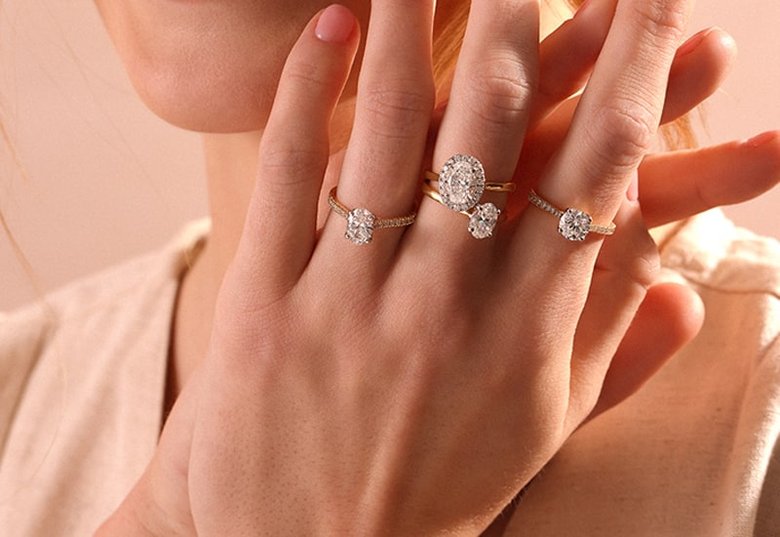Lab-Made Diamonds vs. Real Lab-Grown Diamonds: Grasping the Distinction
In the quickly advancing universe of diamonds, the presentation of lab-made choices has carried both fervor and disarray to buyers. The expressions “lab made diamonds vs real” are frequently utilized reciprocally, prompting confusions about their temperament, quality, and worth. To settle on informed choices, understanding the subtleties between these two categories is fundamental.
What Are Lab-Made Diamonds?
Lab-made diamonds allude to a general classification of jewel simulants that are made in a laboratory setting. These simulants incorporate materials like cubic zirconia, moissanite, and different substances that are made to look like the presence of normal diamonds. Be that as it may, while lab-made diamonds might seem to be like normal diamonds, they are not artificially or genuinely indistinguishable.
Lab-made diamonds are ordinarily considerably less costly than both normal diamonds and lab-grown diamonds. This moderateness is because of the various materials utilized and the easier cycles expected to deliver them. While they can be an alluring choice for those looking for a financial plan accommodating other option, lab-made diamonds don’t have a similar hardness, brightness, or strength as veritable diamonds.
The Reality of Lab-Grown Diamonds
Lab-grown diamonds, then again, are real diamonds in a literal sense. They are made utilizing progressed mechanical cycles that recreate the normal circumstances under which diamonds structure in the Earth. The two essential strategies used to make lab-grown diamonds are High Strain High Temperature (HPHT) and Substance Fume Statement (CVD). The two cycles bring about diamonds that are artificially, actually, and optically indistinguishable from mined diamonds.
Lab-grown diamonds are made of unadulterated carbon, very much like normal diamonds, and show a similar hardness, splendor, and fire. They are reviewed similar principles as mined diamonds, including the Four Cs: Carat weight, Cut, Variety, and Lucidity. Subsequently, lab-grown diamonds offer a certified option in contrast to dug diamonds for those looking for an additional practical and moral decision.
The Moral and Ecological Contemplations
One of the key elements driving the prevalence of lab-grown diamonds is their moral and ecological allure. Customary jewel mining has been related with a scope of moral worries, including denials of basic liberties, ecological corruption, and the supporting of contention through “blood diamonds.” Lab-grown diamonds, then again, are delivered in controlled conditions that wipe out the requirement for hurtful mining rehearses.
The ecological effect of lab-grown diamonds is likewise fundamentally lower than that of mined diamonds. The most common way of making diamonds in a laboratory expects undeniably less energy and water, and it produces less fossil fuel products. This makes lab-grown diamonds a more reasonable choice for earth cognizant shoppers.
Misinterpretations and Promoting
Regardless of the unmistakable contrasts between lab-made and lab-grown diamonds, promoting practices and shopper mistaken assumptions have obscured the lines between the two. A few organizations might utilize the expression “lab-made” to portray both precious stone simulants and lab-grown diamonds, prompting disarray about the legitimacy and worth of the item being advertised.
Customers ought to know that while lab-grown diamonds are real diamonds, lab-made diamonds frequently allude to simulants that don’t have similar properties as authentic diamonds. It is significant to explore and comprehend the wording utilized retailers to guarantee that the jewel being bought fulfills the ideal guidelines of value and realness.
The Fate of Diamonds: Lab-Grown as the New Norm?
As attention to the moral and natural issues encompassing mined diamonds develops, lab-grown diamonds are progressively viewed as the fate of the precious stone industry. They offer a veritable, top notch option in contrast to regular diamonds without the related moral worries. With progressions in innovation, lab-grown diamonds are turning out to be more open and reasonable, making them an appealing choice for a large number of customers.
Conversely, lab-made diamonds, while outwardly comparable, don’t offer a similar degree of realness or solidness as lab-grown diamonds. For those looking for a genuine precious stone, lab grown diamonds address an ideal mix of development, morals, and quality.
Conclusion: Going with an Educated Decision
The differentiation between lab-made and lab-grown diamonds is critical for making an educated buy. Lab-grown diamonds offer all the excellence and nature of normal diamonds while giving a more moral and harmless to the ecosystem choice. Conversely, lab-made diamonds, frequently simulants, don’t have similar attributes as real diamonds. Understanding these distinctions guarantees that purchasers can pick the precious stone that best suits their qualities, necessities, and assumptions.


